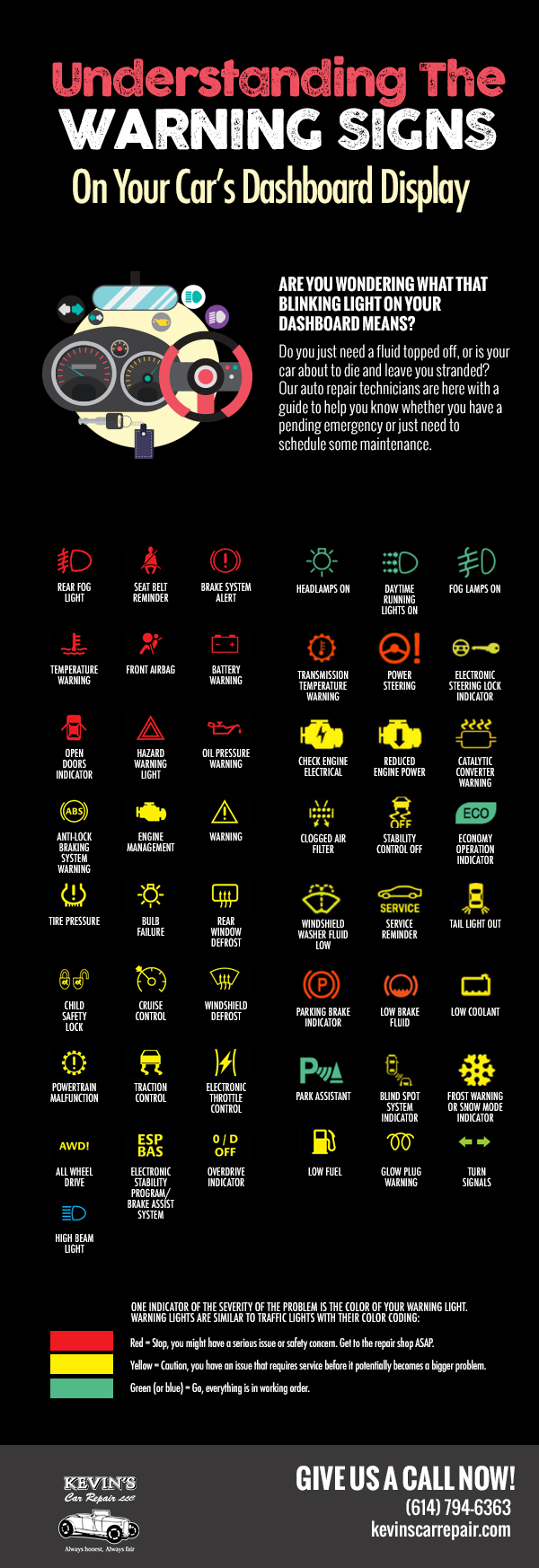Analyzing Your Car'S Warning Indicators: What They Really Communicate
Analyzing Your Car'S Warning Indicators: What They Really Communicate
Blog Article
Authored By-Hartley Stark
When you're behind the wheel, those glowing caution lights on your control panel can be a little bit puzzling. Do you recognize what they're attempting to tell you about your automobile's health and wellness? Comprehending the significance of these lights is important for your security and the durability of your automobile. So, the next time one of those lights appears, would not you want to decipher its message accurately and take the necessary actions to resolve it?
Common Warning Lights and Interpretations
Determine usual warning lights in your vehicle and comprehend their definitions to guarantee risk-free driving.
The most common warning lights consist of the check engine light, which indicates concerns with the engine or emissions system. If this light begins, it's vital to have your lorry checked immediately.
The oil pressure alerting light shows reduced oil pressure, needing instant interest to stop engine damages.
carwash blinking battery light may suggest a defective charging system, potentially leaving you stranded otherwise resolved.
The tire stress monitoring system (TPMS) light notifies you to reduced tire pressure, impacting automobile security and gas performance. Neglecting this could result in unsafe driving conditions.
The abdominal muscle light suggests a problem with the anti-lock braking system, endangering your ability to quit rapidly in emergency situations.
https://www.lubbockonline.com/story/news/crime/2021/12/21/suspect-arrested-fatal-shooting-lubbock-auto-repair-shop/8982722002/ but not least, the coolant temperature level cautioning light warns of engine getting too hot, which can cause serious damage if not settled quickly.
Comprehending these usual caution lights will certainly help you address problems quickly and keep safe driving problems.
Relevance of Prompt Attention
Recognizing the usual warning lights in your cars and truck is just the initial step; the significance of promptly addressing these cautions can't be stressed enough to guarantee your safety and security when traveling.
When a warning light brightens on your control panel, it's your vehicle's method of interacting a potential problem that needs attention. Disregarding these warnings can result in extra serious problems down the road, endangering your security and possibly costing you a lot more in repairs.
Prompt attention to alerting lights can avoid malfunctions and mishaps. For instance, a flashing check engine light can suggest a misfire that, if left unattended, might trigger damages to the catalytic converter. Resolving this without delay can save you from an expensive repair work.
In a similar way, a brake system warning light might signal reduced brake fluid or used brake pads, crucial parts for your safety and security when driving.
Do It Yourself Troubleshooting Tips
If you notice a caution light on your dashboard, there are a couple of DIY fixing tips you can try before looking for expert aid.
marine detailing services is to consult your vehicle's guidebook to comprehend what the details warning light indicates. Occasionally the problem can be as simple as a loose gas cap causing the check engine light. Tightening the gas cap may resolve the trouble.
An additional common issue is a reduced battery, which can set off numerous alerting lights. Checking the battery links for corrosion and guaranteeing they're secure may take care of the problem.
If a warning light continues, you can try resetting it by separating the auto's battery for a couple of mins and afterwards reconnecting it. Furthermore, examining your lorry's liquid degrees, such as oil, coolant, and brake fluid, can assist repair advising lights associated with these systems.
Final thought
Finally, comprehending your vehicle's warning lights is important for keeping your car running smoothly and safely. By quickly attending to these notifies and knowing what they imply, you can prevent expensive repair work and potential failures.
Keep in mind to consult your automobile's handbook for particular information on each advising light and do something about it as necessary to guarantee a trouble-free driving experience.
Stay informed, remain safe when driving!
